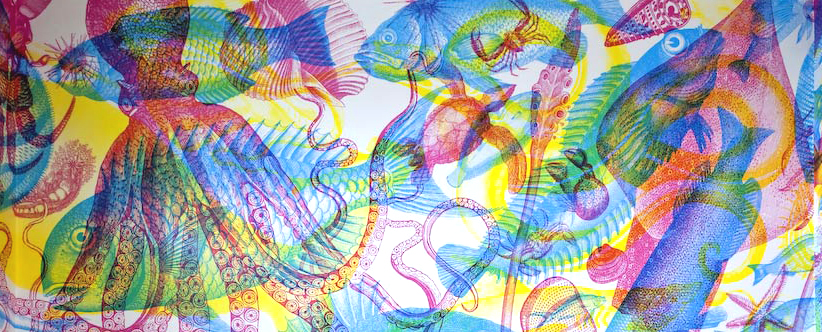(Image from The Carnovsky Design Company, www.carnovsky.com)
The Colour Project
Research collaborators: Martin Hahn (SFU), Lyle Crawford (SFU)
Many years ago, I decided, perversely, to use colour as a test case for a theory of intentional representation. That was some time in the early 1990's — and I have yet to climb out of the (lovely) morass which is colour research. The story of colour is multi-faceted, complex, fast-paced—and there is always new and original, the latest twist on an already very twist-y story. Prime territory for any neurophilosopher.
Originally, Martin Hahn and I were to write a book together based upon the Spectral Theory of Colour. Many things happened. Chapters were written; I became ill and the project came to a halt; one day, my laptop with the only copy of the chapters on it, was stolen out of my bed in a home burglary (what are the chances?). In the interest of 'general recovery' (myself and the project as a whole) the plan is now simpler: To put together a series of essays on colour that covers the main topics of the book-that-disappeared. These papers include: Colour Vision from a Neuroethological Perspective (with Lyle Crawford); The Spectral Theory of Human Colour Vision (with Martin Hahn); The Development of Colour Perception in Children (with Jason Leardi); Colour Phenomenology—Coming Your Way in Two Parts (Chromatic and Colour Perception Proper).
Publications
MORE THAN MERE COLOURING: The Role of Spectral Information in Human Vision (In press. The British Journal of Philosophy of Science.)
Abstract. A common view in both philosophy and the vision sciences is that, in human vision, wavelength information is primarily ‘for’ colouring, for seeing surfaces and various media having colours. In this article we examine this assumption of ‘colour-for-colouring’. To motivate the need for an alternative theory, we begin with three major puzzles from neurophysiology, puzzles that are not explained by the standard theory. We then ask about the role of wavelength information in vision writ large. How might wavelength information be used by a monochromat, a dichromat and finally by a trichromatic primate with object vision? We suggest that there is no single ‘advantage’ to trichromaticity but a multiplicity, only one of which is the ability to see surfaces, etc. as having categorical colours. Instead, the human trichromatic retina exemplifies a scheme for a general encoding of wavelength information given the constraints imposed by high spatial-resolution object vision. Chromatic vision, like its’ partner, luminance vision, is primarily for seeing. Viewed this way, the ‘puzzles’ presented at the outset make perfect sense.
BLACK AND WHITE AND COLOUR. (Forthcoming in Phenomenology and the Neurophilosophy of Consciousness. Richard Brown, editor. Studies in Brain and Mind. Springer Verlag. Forthcoming. This paper is available in final draft form HERE. Please do not copy or quote.)
